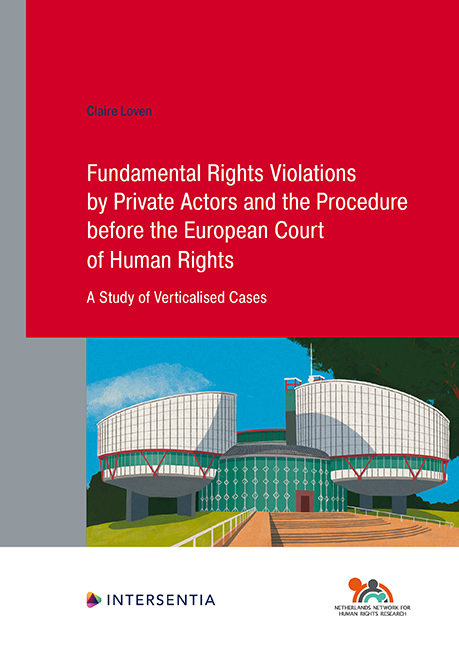 Fundamental Rights Violations by Private Actors and the Procedure before the European Court of Human Rights
Fundamental Rights Violations by Private Actors and the Procedure before the European Court of Human Rights Book contents
- Frontmatter
- Acknowledgments
- Contents
- INTRODUCTION
- PART I INTRODUCTION TO THE CONVENTION SYSTEM
- PART II VERTICALISED CASES UNRAVELLED
- PART III PROBLEMS IN VERTICALISED CASES
- PART IV TOWARDS A NEW APPROACH TO VERTICALISED CASES
- CONCLUSION
- Summary in Dutch
- Bibliography
- Appendix 1 Overview case law sample
- Curriculum Vitae
- Human Rights Research Series
Chapter 8 - Problems that may arise after the Court’s Proceedings
Published online by Cambridge University Press: 29 February 2024
- Frontmatter
- Acknowledgments
- Contents
- INTRODUCTION
- PART I INTRODUCTION TO THE CONVENTION SYSTEM
- PART II VERTICALISED CASES UNRAVELLED
- PART III PROBLEMS IN VERTICALISED CASES
- PART IV TOWARDS A NEW APPROACH TO VERTICALISED CASES
- CONCLUSION
- Summary in Dutch
- Bibliography
- Appendix 1 Overview case law sample
- Curriculum Vitae
- Human Rights Research Series
Summary
INTRODUCTION
The previous chapter focused on problems arising from the Court's approach to verticalised cases that can manifest themselves during the Court's proceedings. To take the analysis a step further, this chapter focuses on problems that can manifest themselves after the Court's proceedings; that is, during the national follow-up and executing of the Court's judgment in a verticalised case and that can result, for example, in domestic proceedings being reopened. First, the effects of a Court judgment for the disappeared party are discussed. These are examined in some detail, given that the extent to which a third party is affected by a judgment is often considered an important factor in determining whether to involve this party in the proceedings, i.e. whether this party should be heard. Second, attention is paid to the perspectives of Convention States and the Court in relation to possible problems that can manifest themselves after the Court has handed down a judgment in a verticalised case (Section 3).
EFFECTS OF A JUDGMENT FOR THE DISAPPEARED PARTY
When discussing the effects of a Court judgment for the disappeared party, it must be kept in mind that the Court does not issue judgments imposing any legal effects on, or granting rights to, private actors, but instead finds for or against the respondent State. The Court's judgments are, moreover, essentially declaratory in nature. Yet this does not mean that such judgments do not affect the rights and interests of the disappeared party. The effect of a judgment of the Court on the disappeared party may be indirect. In their joint concurring opinion in the case of A.M. and Others, concerning the restriction of parental rights, Judges Ravarani and Elosegui held, for example, that ‘[i]t should not be forgotten that its [the Court’s] judgments can lead to the final deprivation of rights previously acquired by third parties, or at least have serious consequences in practice…’. In his concurring opinion in Bochan (No. 2)701 and A and B702, Judge Wojtyczek also described how the indirect effect of a Court judgment can manifest itself.
- Type
- Chapter
- Information
- Fundamental Rights Violations by Private Actors and the Procedure before the European Court of Human RightsA Study of Verticalised Cases, pp. 143 - 162Publisher: IntersentiaPrint publication year: 2022


